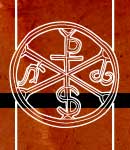
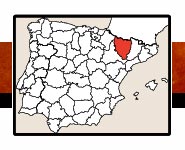

 |
 |
||
 |
|||
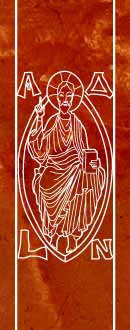 |
(40)/D-J/HUES-AnsHec-40.jpg) |
-55/BOOK-cort-40.jpg) |
 |
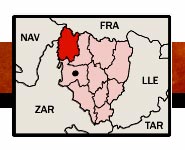 |
||
 |
|||
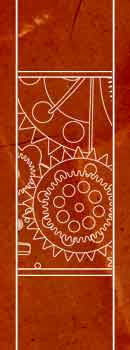 |
MUSEO DEL TRAJE ANSOTANO (ANSO) INFORMACIÓN HISTORICO-ARTÍSTICAEl Museo del Traje Ansotano se encuentra ubicado en la Ermita de Santa Bárbara, en el se conservan una serie de muestras del traje ansotano, que es quizás uno de los más antiguos de Europa, pues se remonta al Medievo, llamando la atención la gran variedad de trajes, creados para todo tipo de ocasiones. HORARIOS- ENTRADAEl Horario (Julio y Agosto) del museo es Lunes y miércoles (12:00-13:00 y 16:45-18:00), martes, jueves, viernes, sábado y domingo (10:00-13:15 y 17:00-20:00), en Semana Santa es de jueves a domingo (11:00-13:00 y 17:30-19:30). aytoanso@aragon.es |
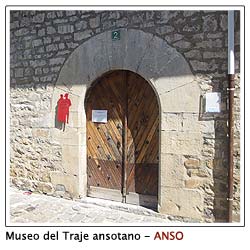 |
MUSEUM OF ANSO DRESS (ANSO) HISTORICAL-ARTISTIC INFORMATIONThe Museum of Anso Dress is located in the hermitage of Santa Bárbara, in which a set of samples of the Dress of Anso is preserved, which is perhaps one of the oldest in Europe, since it goes back to the Middle Ages, attracting attention the great variety of customs, created for all kinds of occasions. TICKETS AND TIMETABLEThe timetable (July and August) of the museum is Monday and Wednesday (12:00-13:00 and 16:45-18:00), Tuesday, Thursday, Friday, Saturday and Sunday (10:00-13:15 and 17:00-20:00) during Hloy Week it is from Thursday to Sunday (11:00-13:00 and 17:30-19:30). aytoanso@aragon.es |
 |
IGLESIA DE SAN MARTÍN (HECHO) INFORMACIÓN HISTORICO-ARTÍSTICALa iglesia de San Martín de Hecho, fue reedificada en el siglo XIX, pues la construcción sufrió un fuerte deterioro causado por la Guerra de la Independencia, es una construcción de sillería y sillarejo, los retablos antiguos también fueron destruidos en la guerra, así que los que vemos provienen del convento de Mercedarios de Javierregay. HORARIOS- ENTRADAayuntamiento@hecho.es |
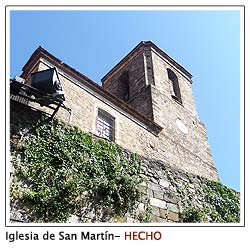 |
CHURCH S. MARTÍN (HECHO) HISTORICAL-ARTISTIC INFORMATIONThe church of San Martín de Hecho, was rebuilt in the 19 th century, because the building suffered a strong deterioration caused by the War of Independence, is a building of ashlar masonry and rubblework masonry, the ancient altarpieces were also destroyed in the war, so what we see comes from the convent of Mercedarios of Javierregay. TICKETS AND TIMETABLE |
 |
ACCESO POR CARRETERA (JACETANIA: ANSO-HECHO) UBICACIÓN DE ENCLAVES:En la localidad de Puente la Reina de Jaca (entre Jaca y Pamplona), tenemos la A-176 que nos lleva a Embún, Hecho y Ansó. ACCESO PARA MINUSVALIDOS:Con silla de ruedas, acceso no factible a las iglesias de San Martín de Hecho (escaleras), a San Pedro de Ansó (escalón interior), a la iglesia de San Pedro de Sirena (escalones de entrada) y a San Martín de Embún (escaleras). Visita limitada al Museo del Traje de Ansó. |
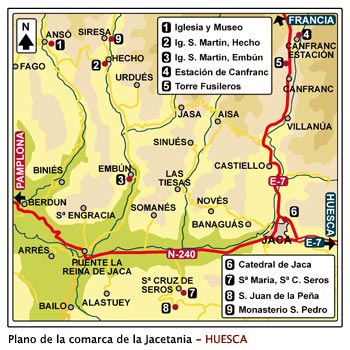 |
ACCESS BY ROAD (JACETANIA: ANSO-HECHO) LOCATIONIn the town of Puente la Reina de Jaca (between Jaca and Pamplona) we have the A-176 tht takes us to Embún, Hecho and Ansó. ACCESS FOR HANDICAPPEDWheelchair access not feasible to the churches of San Martín de Hecho (stairs), San Pedro de Ansó (step) to the church of San Pedro de Siresa (steps at the entrance) and San Martín de Embún (stairs). Limited visit to the Museum of Ansó Dress. |